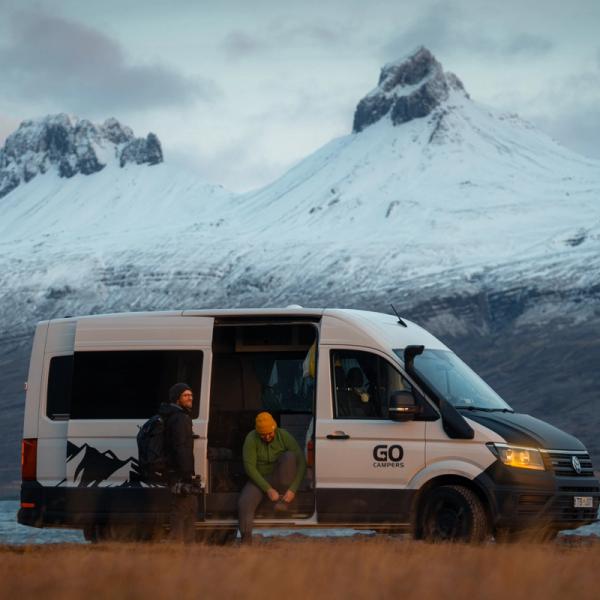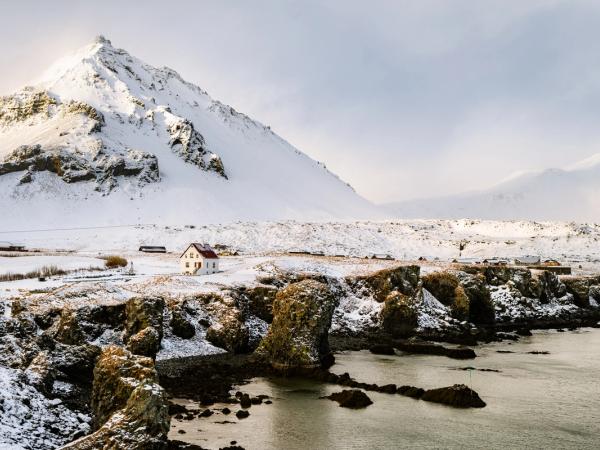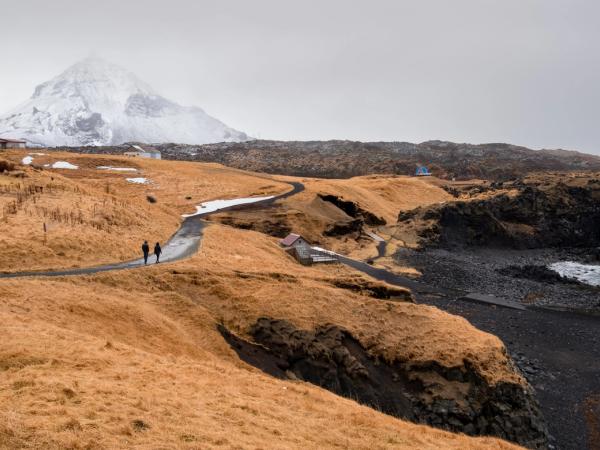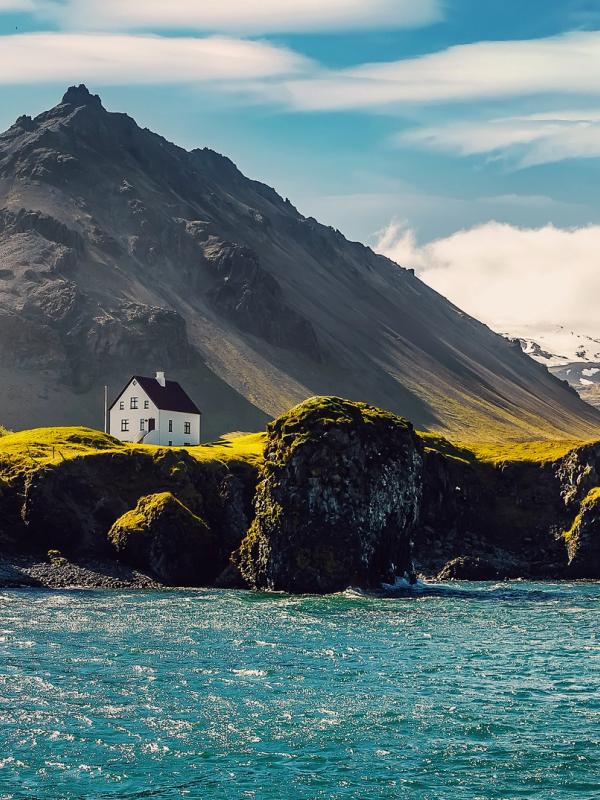
Nature, culture, and mythology: Everything you need to know about Arnarstapi
Of all the charming villages and towns that make up Iceland, not many can compete with Arnarstapi. This small settlement on the southern coast of Iceland's Snæfellsnes Peninsula, in West Iceland, blends culture and nature like no other. It’s also the perfect example of the deep connection Iceland has with the sea. Arnarstapi is inside Snæfellsjökull National Park, one of the most impressive natural areas in all Iceland. Let’s see everything you need to know about this place and where to sleep as part of your campervan adventure.
Key Takeaways
- Arnarstapi is a fishing village on the Snæfellsnes Peninsula, in West Iceland.
- It’s inside Snæfellsjökull National Park, one of the three national parks in the country.
- The town is a great example of the quiet lifestyle in rural Iceland.
What's Arnarstapi?
Arnarstapi, often called Stapi by locals, is a small fishing village with around 20 permanent residents, located in the heart of Snæfellsjökull National Park, one of the three national parks in Iceland. Its environment features striking basalt rock formations, sea arches, and cliffs that drop into the Atlantic Ocean. This town is the perfect example of the strong connection Iceland has always had with the sea. The town was once a thriving fishing hub, but is now a quiet place, still connected to the ocean. The old stone docks can be seen in the harbor. One of the most iconic sights is Gatklettur, a natural stone arch rising from the sea in front of the town. It has been eroded by thousands of years of waves and wind, and it’s just a short stroll away from the town’s center.
Historically, Arnarstapi was a trading post during the Viking Age and medieval times, when its protected harbor made it a safe port for commerce and fishing. As it happens in many other places in Iceland, there are myths and legends associated to the town. The main one here is centered around Bárður Snæfellsás, a legendary figure from Icelandic sagas who was half-human and half-troll. According to the tales, Bárður settled here after arriving from Norway and became the protector spirit of the Snæfellsnes Peninsula. He is said to have disappeared into the Snæfellsjökull glacier, where he still watches over the land. A large stone statue of Bárður stands in the village, overlooking the harbor.
Although it is modest in size, Arnarstapi has several places to eat. One of them is Samkomuhúsið, which serves traditional Icelandic dishes in a homey atmosphere. Stapinn Cafe is a more casual option, with soups, sandwiches, and coffee, ideal for a quick break after hiking. Arnarbær Restaurant is focused on West Icelandic recipes, emphasizing quality seafood. These are great stops as part of a campervan itinerary. If you prefer to cook in your van, the town has a shop, but if you want to fully restock, it’s better to go to a supermarket in a bigger town.
Why is Arnarstapi Worth a Visit?
What makes Arnarstapi particularly appealing for campervan travel is its balance of seclusion and accessibility. It’s also a great location for birdwatching, especially in summer. In this season, several species come to the cliffs to nest. For example, thousands of puffins choose this area in the warmer months, and can be seen from one of the coastal paths in the town.
The Snæfellsnes Peninsula
The Snæfellsnes Peninsula, where Arnarstapi is located, stretches about 90 kilometers into the Atlantic from West Iceland. This region receives the nickname "Iceland in Miniature" due to its diverse landscapes packed into a relatively small area. This area has a bit of everything Iceland is known all over the world: from glaciers and volcanoes to black sand beaches, lava fields, and charming fishing villages, all within a day's drive. The main element is Snæfellsjökull, a stratovolcano with a glacier on top that can be seen from anywhere in the peninsula. There are also opportunities for whale watching and seal spotting along the shores.
What sets Snæfellsnes apart as a travel destination is its accessibility and variety, making it perfect for campervan trips. Roads like Route 54 circle the peninsula, connecting key sites without the need to go off road, but there are some gravel sections that demand a vehicle with higher clearance. Most of the peninsula is inside the national park, so it’s a protected area. At cultural level, this region embodies the cultural connection, so common in Iceland, between nature and legend to perfection. There are many mythological stories attached to the area, with stories of trolls and elves tied to its mountains and cliffs.

Where's Arnarstapi and How to Get There
Arnarstapi is located in West Iceland, on the southern shore of the Snæfellsnes Peninsula, within the boundaries of Snæfellsjökull National Park. It’s about 190 kilometers (118 miles) northwest of Reykjavik, and it’s pretty easy to get there from the capital. The best way to go is by having your own vehicle. This way, you can draw an itinerary through this part of the country. If you rent a campervan, you can design your own route, choosing where to stop and spend the night in one of the many campsites in the area. This way, you can continue your adventure the following day.
From Reykjavík, head north on the Ring Road, Route 1, for about 70 kilometers to Borgarnes. There, turn left onto Route 54, which leads into the Snæfellsnes Peninsula. Follow Route 54 for roughly 100 kilometers until you reach the junction with Route 574. Turn left onto this road, which winds along the coast for another 18 kilometers to Arnarstapi. The total drive takes around 2.5 hours under good conditions, and the whole route is paved. However, the weather can have a huge impact on the driving conditions.
What to See and Do Near Arnarstapi
Arnarstapi is sure worth a visit, but there's not much to do there besides enjoying the views and walking the the coastal path that connects it to Hellnar. However, its location puts it super close to some of the coolest natural attractions in this part of the country.
The Coastal Path Between Arnarstapi and Hellnar
Not far from Arnarstapi there’s an even smaller town but also full of charm: Hellnar. There’s a trail that connects both villages, and it’s one of the most accessible and nicest walks in the region. It has a length of 2.5 kilometers (1.5 miles) along the rugged coast, passing basalt columns, sea stacks, and the impressive Gatklettur stone arch. Along the way, there are a few viewpoints to enjoy the surrounding landscapes and great to spot sea birds in the summer months, including puffins and kittiwakes. The path is well-marked with gravel sections and minor elevation changes, taking 45 minutes to an hour one way. Hellnar, at the end, has a small café for a quick stop before continuing with your trip.
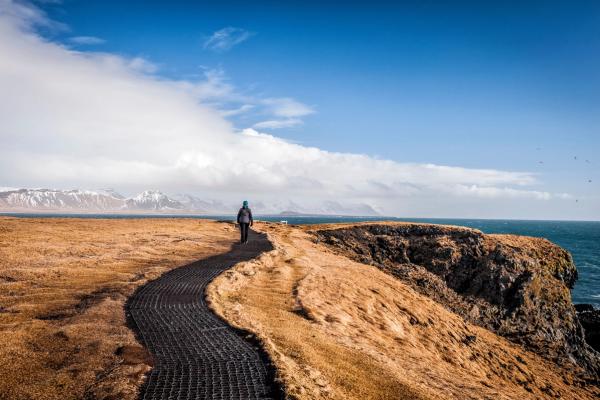
Snæfellsjökull National Park
Snæfellsjökull National Park covers 170 square kilometers at the peninsula's western end. It comprehends both land and sea areas, being the only one of the three national parks in Iceland to have them. The center of the park is the stratovolcano topped by a glacier that gives its name to the park. The mountain is a place of literary fame, as Jules Verne located here the entrance to the underworld in "Journey to the Center of the Earth." There’s a large network of hiking trails that allow you to explore all the corners of the park. Two of the most searched animals in Iceland can be found here: Arctic foxes and seals.

Rauðfeldsgjá Gorge
Not far from Arnarstapi we can find this narrow gorge that cuts like a scar into the side of a mountain. It was formed by glacial meltwater carving through rock over time. This amazing geological feature, which looks hidden, is about 100 meters (328 feet) deep, with moss-covered walls and a stream running through its base. There’s a short but moderate trail from the parking area to the entrance of the gorge. Inside, the air is damp and always cool, even on the warmer summer days.

Bjarnarfoss
Bjarnarfoss is an 80-meter waterfall cascading in two tiers from basalt cliffs on the southern part of the Snæfellsnes Peninsula, near the town of Búðir. The falls, whose name can be translated as “bear’s waterfall,” is part of the river Bjarná. The upper part, more exposed, catches the wind, and the water sways and dances against the cliff. It’s unknown why the waterfall gets this name, as there are no bears native to Iceland.
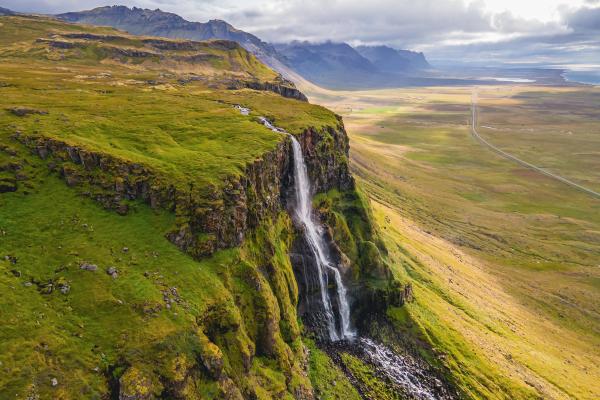
Búðakirkja
Búðakirkja is a small black wooden church set in the middle of a lava field near Búðir, about 15 kilometers east of Arnarstapi. Built in 1703 and refurbished in the 19th century, its simple design contrasts sharply with the surrounding landscape, especially the green meadows in the back. It’s quite simple, but a great example of traditional Icelandic architecture.
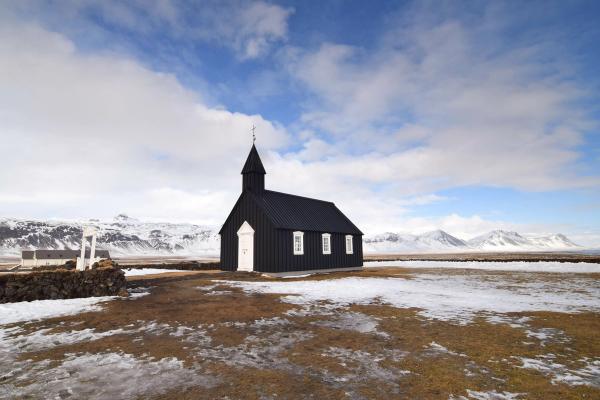
Sönghellir Cave
This small cave near Arnarstapi is known for its incredible acoustics. Sönghellir means “Cave of Song,” and it’s a lava tube that creates an echo that sounds like a natural amplifier. It’s just 20 meters long and it’s believed that, in the past, it was used by travelers for shelter when bad weather struck. There are ancient carvings on its walls.
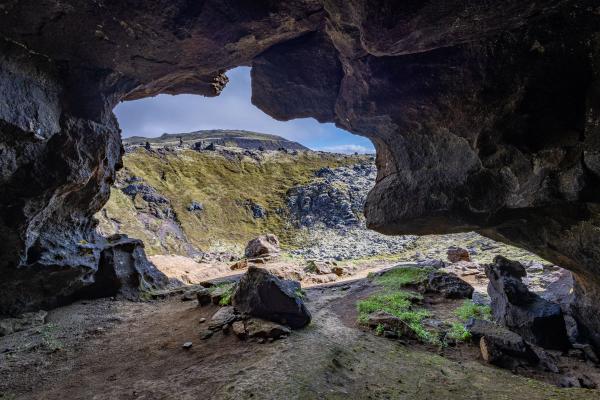
Lóndrangar
A few miles west of Arnarstapi we can find the Lóndrangar cliffs, that have two huge rock formations rising from the sea. They are the remains of an old volcanic crater that has been eroded by the action of the sea. The tallest of the two is 75 meters (246 feet) tall, while the other stands at 61 meters (200 feet). This part of the park is also steeped in folklore, as there are tales that say the two stone pillars are the remains of two trolls who were surprised by the sun and turned to stone. It’s also a great place to see puffins and other sea birds in the summer.
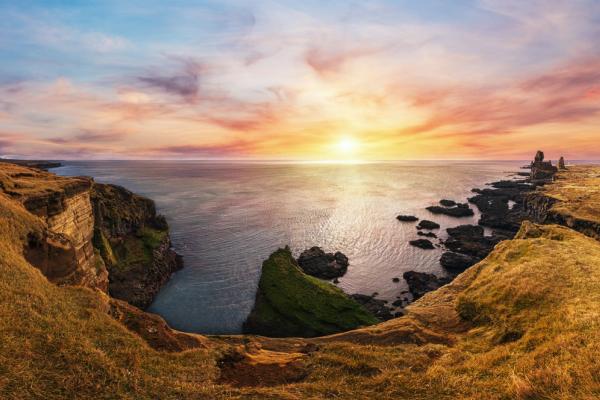
Whale Watching in Ólafsvík
Many people come to Iceland with plans to see whales in their natural habitat. And there’s a town on the Snæfellsnes Peninsula that is one of the places in the country for this activity. There are several companies that operate boat tours from Ólafsvík’s harbor, on the northern shore of the region.
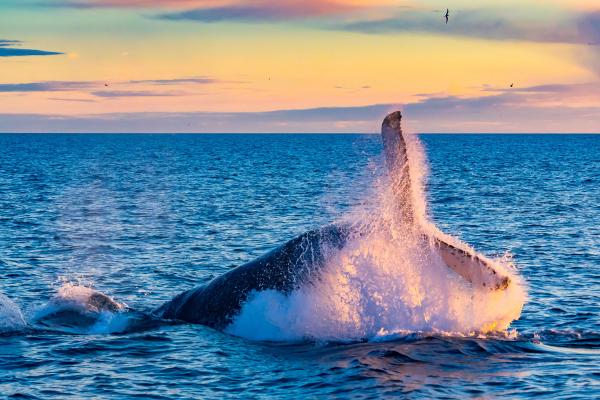
Where to Stay Near Arnarstapi
Staying in the area is the best you can if you want to explore the Peninsula without a rush. You have plenty of nice options to choose from.
Arnarstapi Campsite
Distance to Arnarstapi: In town. Opening period: May to September.
If you’re coming to visit Arnarstapi as part of your campervan trip, good news is the town has its own camping ground. It’s close to the center, so you’ll have access to all the services, like shops, a gas station and restaurants, that can be found there. The campground has showers, toilets, Wi-Fi, electricity hookups, and a sink for washing dishes. It also features 13 cottages suitable for two adults and a child, perfect for a cozier stay, and they offer free Wi-Fi. It’s not very big, so it’s better to book in advance, especially during peak season.
Ólafsvík Camping Ground
Distance to Arnarstapi: 36 km (22 miles). Opening period: May to September.
Located on the eastern edge of Ólafsvík, this site features grassy pitches in a beautiful natural setting, as well as showers, toilets, Wi-Fi, electricity, and a playground for children. Its proximity to the center gives access to shops, restaurants, and other services.
Hellissandur Camping Ground
Distance to Arnarstapi: 36 km (22 miles). Opening period: May to September.
Opened in 2011, this campsite is located in the middle of a beautiful lava field called Sandahraun. It has a common area with toilets, showers, and sinks. There are also several trails from the camping ground to explore the area. The campsite is operated by the information center in Snæfellsbær, which is located in the next town, Ólafsvík, about 9 km from Hellissandur.
Stykkishólmur Camping Ground
Distance to Arnarstapi: 87 km (54 miles). Opening period: May to October.
Positioned next to a golf course in Stykkishólmur, on the northern shore of the peninsula, this basic campsite has toilets, a washing machine, and electricity. It’s a bit far from Arnarstapi, but can be a good base to explore the region.
Snorrastadir
Distance to Arnarstapi: 85 km (53 miles). Opening period: All year.
This farm-based campsite near a stream has fantastic mountain views and separated areas for tents and vehicles. It’s a traditional farm that has been operated by the same family since 1883. It has a camping area with toilets, showers, kitchen and electricity. They also have several cabins for up to five people. If you want a different stay, you can opt for the guest house with rooms equipped with bunk beds. Surrounded by hills and lava fields, it’s a charming spot for those seeking solitude and a taste of traditional Icelandic farm life.

The Weather in Arnarstapi
In West Iceland, like in the entire country, the weather is unpredictable and is constantly changing. For this reason, it is essential to be well prepared for all conditions. The Snæfellsnes Peninsula is not as cold as the north or the center of the island, but it’s wetter and windier.
Summer in Arnarstapi, from June to August, brings average temperatures of 10°C to 15°C with nearly 24 hours of daylight, which are perfect for exploring the town and its surroundings. The weather is a mix of sun and rain showers, and the wind is always a factor to consider, especially being so close to the sea. All the campsites are open and the migratory birds come to the cliffs to nest. On the other hand, it’s the season with more tourists.
Autumn, spanning September and October, sees temperatures drop to 5°C to 10°C, with shorter days and higher probabilities of rain. The landscapes get beautiful changing colors, adding a layer of beauty to the already astonishing natural environment. The weather becomes even more unpredictable, with stronger winds and frequent rain that can complicate road travel. Also, some camping grounds are starting to close for the season. On a positive note, there are not many visitors.
Winter weather, from November to March, averages -5°C to 5°C, milder than inland areas due to the sea influence. However, snow and storms are common, and the days are really short. If you’re coming in this season, beware that some roads are closed due to adverse weather, and it’s necessary to rent a 4x4 campervan. But, on clear nights, there are chances to see the Northern Lights.
Spring, April to May, offers temperatures from 0°C to 10°C, with melting snow revealing green fields and blooming flowers. Nature begins to wake up after the long winter, but the weather shifts constantly. There can still be snow and ice on roads and trails, so drive and tread carefully.
What to Pack to Visit Arnarstapi
When preparing your suitcase for a trip to Arnarstapi, there are a few items that you should consider bringing.
- Clothes in layers. A thermal base layer; fleece or wool for mid layers, and a waterproof and windproof jacket on top.
- Waterproof pants and jacket to stay dry during rain.
- Sturdy hiking boots with good grip for trails and uneven terrain.
- Hat, gloves, and scarf for colder evenings or windy days. Even in summer, the temperature drops once the sun sets.
- Sunscreen and sunglasses. In summer, they protect from the direct sun, and in winter, from the reflection off snow.
- Reusable water bottle and snacks. Tap water is quite pure in Iceland and is safe to drink. Also, when going on excursions to rural areas, there are no shops, so having some snacks can make the difference.
- Power bank for devices in case you are out for long hours. You won’t want to run out of battery without knowing your route back to the campsite.
- Offline maps or GPS device for navigation in areas with poor signal.
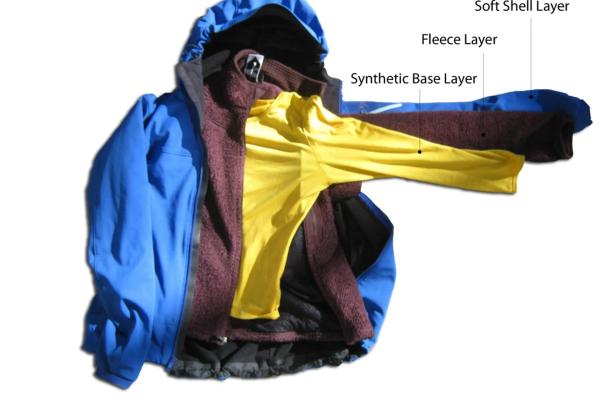
Travel Tips
- Always check the Icelandic Met Office website for weather forecasts and the Icelandic Road and Coastal Administration for road conditions before setting out, as changes can happen quickly.
- Fuel up in towns like Borgarnes or Grundarfjörður, since stations are sparse in rural areas.
- Book campsites in advance during summer, especially popular ones like Arnarstapi, to secure spots with electricity.
- Drive cautiously on gravel roads and respect speed limits to avoid fines or vehicle damage.
- Stick to marked paths when hiking to protect fragile vegetation and prevent erosion.
- Carry cash for some campsites or small shops, though cards are widely accepted.
- Respect the environment and take all your trash with you.
- Pack extra food and water for flexibility in case of delays from weather.
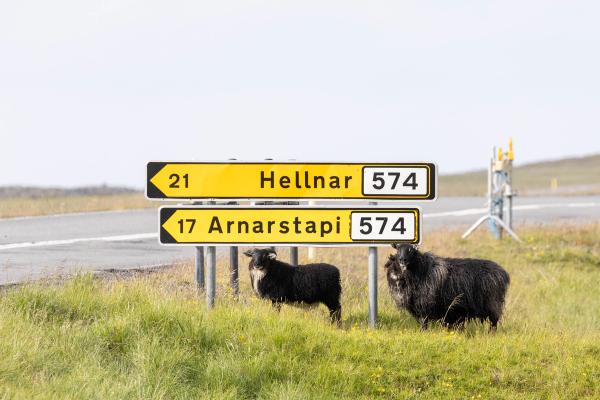
Conclusion
Arnarstapi is a fantastic place to feel the connection between culture and nature that is so appealing in Iceland. This town, although small and quiet, has more to offer than its size says. It’s charming and surrounded by amazing natural monuments, making it a perfect stop as part of a road trip through this part of Iceland.

